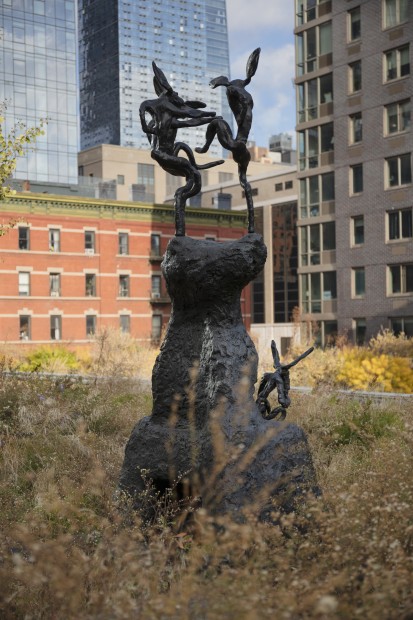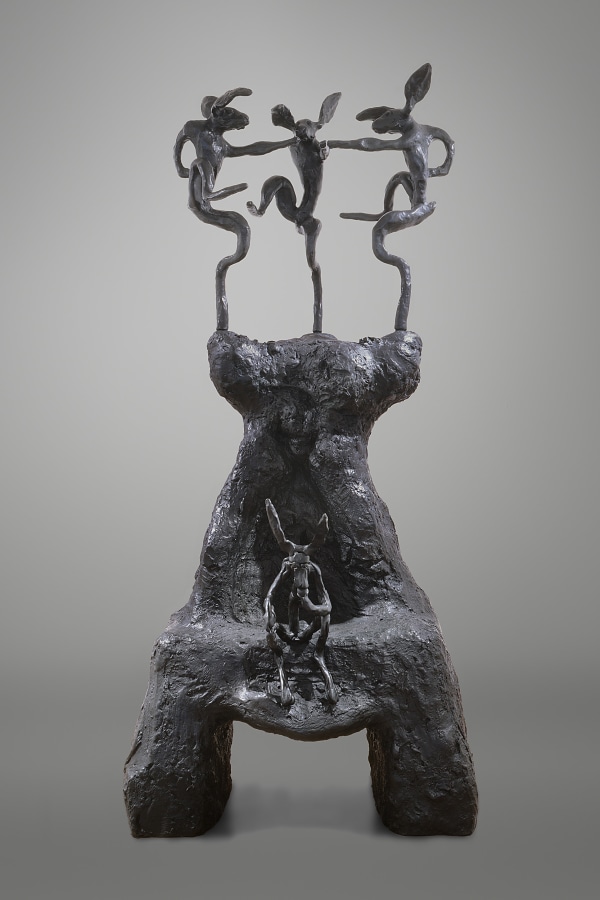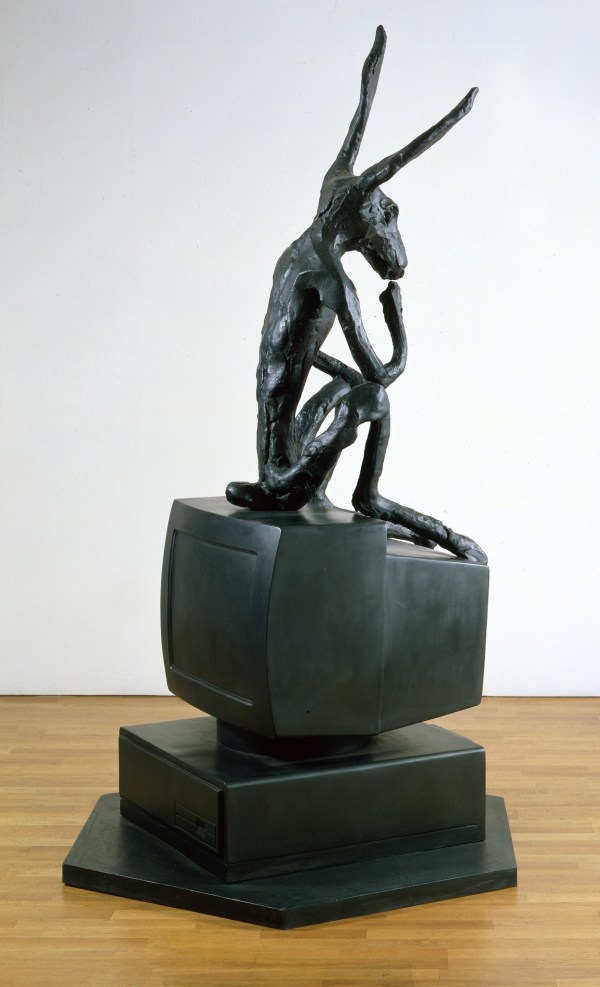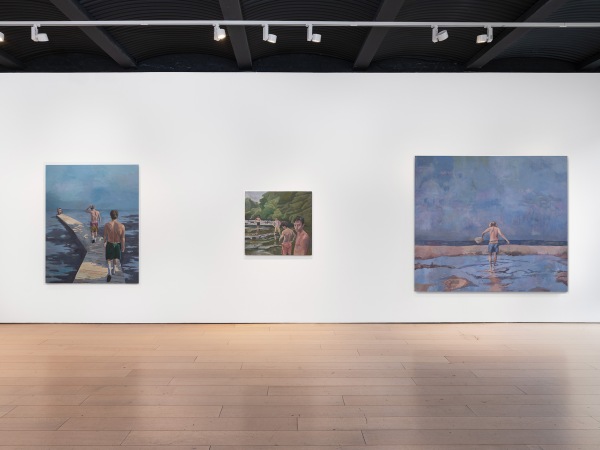Barry Flanagan
-
-
Kasmin Sculpture Garden presents an exhibition of two large-scale bronze sculptures by Welsh sculptor Barry Flanagan (1941–2009). Representing significant examples of the artist’s later work featuring his signature motif of the hare, the works are situated on the roof of the gallery’s 509 West 27th Street space and on view from The High Line at 28th Street.
-
In the late 1970s, Flanagan began to distill his decades-long fascination with ontology, movement, and materiality into the figure of the hare. He was fascinated by the animal’s anthropomorphic potential—its ability to magnify a range of expressive attributes and to convey meaning and feeling beyond what he felt was possible in the manifestation of human form. The artist’s immersion in the country pursuits of gamekeeping and poaching, as well as the publication of George Ewart Evans' ‘The Leaping Hare’ in 1972, cemented the artist’s engagement with the animal’s mythological and Pataphysical iconography. After witnessing the animal dash across the Sussex Downs, Flanagan was struck by its mysterious, acrobatic, unpredictable movements as set against the backdrop of an untamed wilderness.
-

-
Flanagan's enduring wit and engagement with the work of August Rodin is exemplified in Larger Thinker on Computer (2003), which depicts a hare sitting on top of a desktop computer screen in the pose of The Thinker. As well as humorously drawing upon the composition of the work, Flanagan elaborates on the dynamic potential of bronze first radically proposed by the French sculptor in the early 20th Century.
Large Monument, 1996, similarly draws on the work of Rodin, this time in a homage to the monumental Gates of Hell (1880–1971). Jo Melvin, Director of the Estate of Barry Flanagan, says of the sculpture: “It has a material and visceral quality that responds to Rodin’s handling and uses a tactile sensibility to create an inventive transformation of his composition. Flanagan uses three different methods to model the components. Rodin’s angst-ridden Three Shades become three virile dancing Nijinski hares, modelled in clay and using Rodin’s own triumphant subject of the celebrated dancer as a refutation in the face of the gates of hell. The thinker is made with modelling resin and is muscular like Rodin’s Thinker, but in Flanagan’s hare the limbs are indicative, tense equivalents of musculature with the resin slabs wrapped round the armature. The gate is a potent mass of material, showing the chiselled and hacked marks of its making and its scale makes the confrontation with physicality inevitable.”
-

-
The exhibition continues Kasmin’s ongoing commitment to bringing Flanagan’s work to the public in New York, beginning with the installation of Large Left-Handed Drummer in Union Square (2007) and a solo presentation of the artist’s bronze hares at ADAA The Art Show held in the Park Avenue Armory (2009). Examples of Flanagan’s iconic hare works are included in important public collections such as Hirshhorn Museum and Sculpture Garden, Washington, D.C.; Museum of Modern Art, New York; Peggy Guggenheim Collection, Venice, Italy; San Francisco Museum of Modern Art, San Francisco, CA; Tel Aviv Museum of Art, Tel Aviv Yafo, Israel; and Tate, London, United Kingdom.
-
Works
-
About the Artist

-
Explore
-

Judith Bernstein: Public Fears
January 6 – February 15, 2025 509 West 27th Street, New YorkJudith Bernstein’s third solo exhibition at the gallery, Public Fears, will survey nearly 60 years of work—from 1966 to the present—underscoring the enduring urgency of Bernstein’s trailblazing artistry. Including new paintings, works on paper, and a restaging of her iconic Signature Piece (1986), this will be Bernstein’s first New York solo exhibition since the acquisition of her major charcoal screw drawing Horizontal (1973) by The Metropolitan Museum of Art in 2023. The exhibition anticipates the artist’s major museum retrospective at Kunsthaus Zurich in 2026. -

Emil Sands: Salt in the throat
January 9 – February 15, 2025 297 Tenth Avenue, New YorkFor his debut exhibition in Chelsea, Emil Sands explores shifting codes of human behavior and the influence of the surrounding world in a suite of new paintings. In the open air of a seascape or the shadows of a dense forest, Sands’ settings act as stage sets in which his cast of characters perform, reading one another's subtle gestures. As he exaggerates these figures and invites viewers to extrapolate on their relationships, Sands' considered brushwork and intuitive use of color combine to construct narratives filled with humor and pathos.
-







